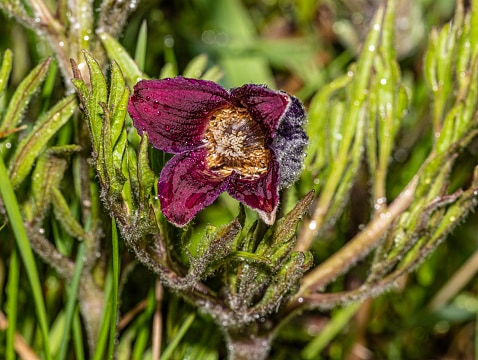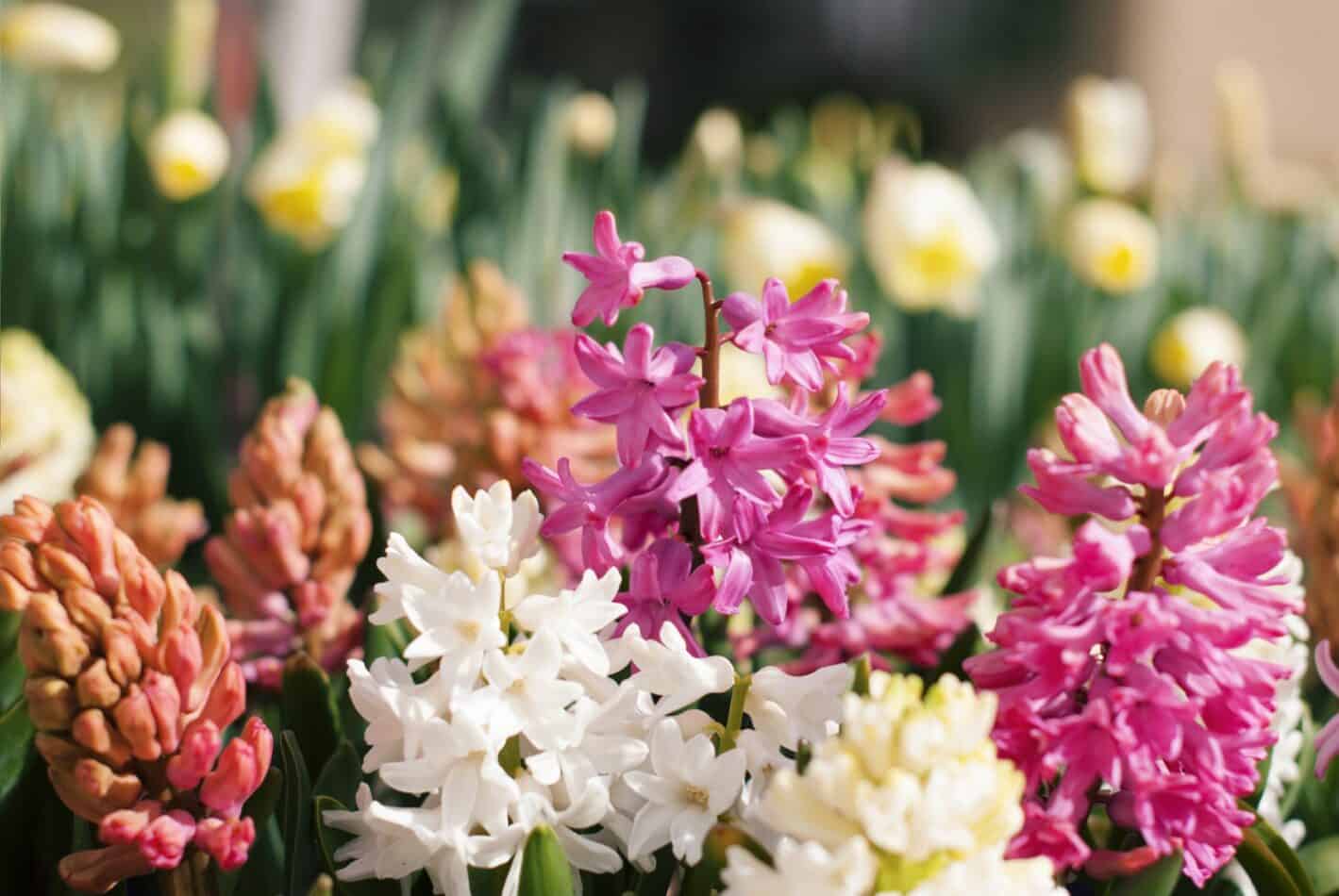The Sugarbowl Clematis (Clematis Scottii) is a species of Floribunda clematis and is a member of the Ranunculaceae family. It is a herbaceous perennial that grows up to 1–2 m and produces urn-shaped, nodding blooms that are usually dark violet in color, sometimes pink or white. Sugarbowl clematis starts blooming in early spring and keeps producing flowers until late summer. The flower buds form an attractive inverted teardrop shape adding charm to any garden. After the blooms die off, the fuzzy seed heads add interest to the late summer garden. Although part of the Clematis group, it is non-vining, instead preferring to stay in borders or rock gardens.
How to Plant
Sugarbowl Clematis enjoys light and fertile, well-draining soil. It does best in an environment with rich soil and plenty of sun. These plants prefer neutral to slightly alkaline soil with a pH level between 6.0 and 8.0. Sugarbowl clematis was designed to thrive from spring to fall, in temperatures ranging from 45°F to 85°F (7°C – 29°C). When planting indoors, make sure to provide adequate spacing and light. Planting in an east-facing window will provide the plant with lots of light, and make sure to water it regularly. As Sugarbowl Clematis is a hardy plant, it is suitable for both indoor and outdoor potting.
Meaning and Symbolism
Throughout history, the Sugarbowl Clematis has been associated with a variety of meanings and symbolism. In the Victorian era, people believed the clematis represented intellect and artistry. The most popular meaning of the Sugarbowl Clematis is “mental beauty” which may be attributed to its delicate beauty. Clematis is also sometimes referred to as “the traveler” as it produces a lot of long thin shoots that grow allowing the plant to travel far during the blooming season.
History and Religious Significance
The Clematis genus has been part of traditional medicine for thousands of years. There is evidence of it being used for treating a range of illnesses, including headaches, constipation, and depression. In addition, the plant was used by many cultures to create handsome necklaces, bracelets, and other jewelry.
More recently, the clematis has become a popular Christian symbol. It symbolizes the power of faith and encourages believers to remain on a true Christian path, while reminding them of the death and resurrection of Christ.
Flower Varieties and Their Defining Characteristics
The Sugarbowl Clematis is a species of Floribunda clematis and comes in a variety of colors and sizes. The most common colors are pink, white, and dark violet. The most common varieties of Sugarbowl Clematis include:
- Clematis Scottii ‘Rubens’: Large pink flowers, very abundant bloom.
- Clematis Scottii ‘Alba’: White, large flowers, and abundant flowering.
- Clematis Scottii ‘Lactea’: Very pale, pinkish-white flowers, which are much smaller than other Sugarbowl Clematis varieties.
- Clematis Scottii ‘Multi-Foliate’: Very abundant bloom and deep violet-blue petals.
How to Pot and Repot
When potting and repotting, it is best to use a terracotta pot with good drainage holes. The size of the pot should be sufficient for the root space needed and should be 2-3 times wider than the plant’s root ball. The soil for the pot should be a mixture of 3 parts soil and 1 part sand or perlite. Make sure to water the plant thoroughly after potting, and to use a fertilizer once a month. It is important to ensure the soil is not too wet or too dry; water when the top of the soil feels dry. Pots with drainage holes are best as this will prevent waterlogging. Interplanting is recommended to create a more secure foothold.
How to Prune
Pruning is important to ensure that Sugarbowl Clematis grow properly and produce healthy blooms. For best results, prune the vine during late winter or early spring. Flowering will be significantly improved when there is a well-structured, healthy structure of branches in the plant. It is recommended to selectively remove any weak or dead stems, and lightly trim the plant to promote bushier growth. Pruning too late in the season can reduce flowering in the following season.
How to Propagate
Propagation of Sugarbowl Clematis is easiest with cuttings, where pieces of the vine are snipped off and planted in soil or a rooting medium. Simply choose a healthy part of the vine and snip off a four to six inches piece with a pair of sharp gardening shears. Make sure to snip just below a leaf joint and at a slight angle. The cuttings should be placed in a pot of moist soil or medium. It is best to water the soil before adding the cuttings and to keep it moist but not over-water. Once planted, place the pot in a bright area with indirect sunlight for best results. When the cuttings begin to produce new green growth, fertilize them lightly with a balanced fertilizer.
Common Pests and Diseases
The most common pests that affect the Sugarbowl Clematis are aphids, spider mites, and Japanese beetles. To prevent these pests, it is important to ensure the plants are properly cared for and are kept in a healthy environment. Common diseases that affect this species of clematis include fungal disease, root and crown rot, and powdery mildew. To prevent diseases, ensure the soil is well-draining, and move the plant to a cooler, less humid environment.
FAQs
- Q: How long does Sugarbowl Clematis take to flower?
A: Sugarbowl Clematis usually takes a few months to flower, once it has been planted. - Q: Is the Sugarbowl Clematis an indoor or outdoor plant?
A: The Sugarbowl Clematis is suitable for both indoor and outdoor potting. - Q: Does the Sugarbowl Clematis need full sun?
A: While the Sugarbowl Clematis thrives in plenty of sunlight, it requires protection from direct afternoon sun and extreme temperatures.
Fact Sheet
| Name | Data |
|---|---|
| Sugarbowl Clematis | Clematis Scottii |
| Family | Ranunculaceae |
| Plant Type | Perennial |
| Mature Size | 1–2 m |
| Sun Exposure | Partial Shade to Full Sun |
| Soil Type | Light and Fertile |
| Soil pH | Neutral to Slightly Alkaline |
| Bloom Time | Early Spring to Late Summer |
| Flower Color | Pink, White, Dark Violet |
| Hardiness Zones | 2 to 11 |
| Native Area | Europe, North America |
What we love from Amazon this week
Buy these wonderful flowers directly from Amazon:















